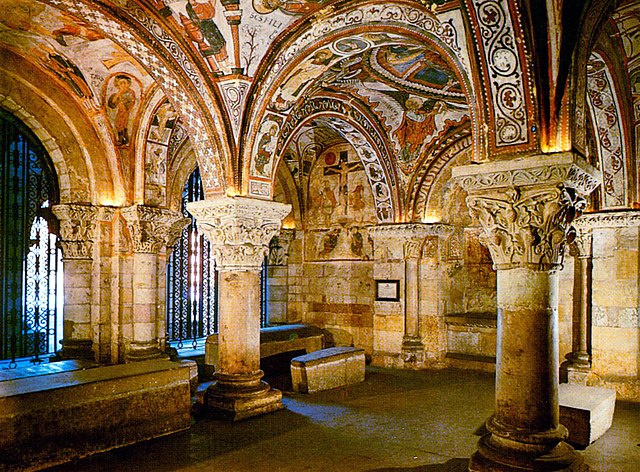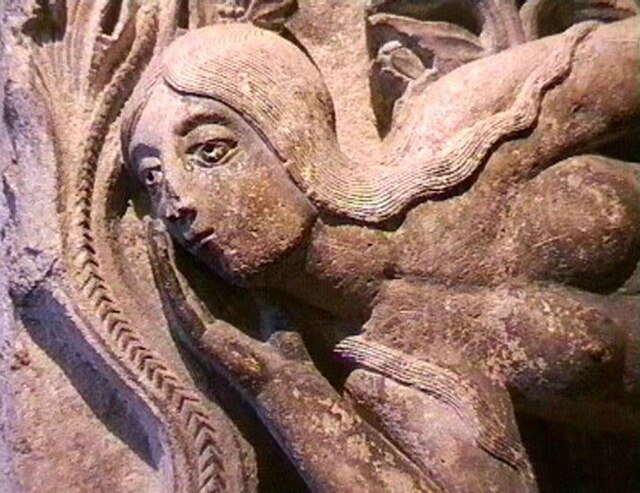Gislebertus, Giselbertus or Ghiselbertus, sometimes "of Autun", was a French Romanesque sculptor, whose decoration of the Cathedral of Saint Lazare at Autun, France – consisting of numerous doorways, tympanums and capitals – represents some of the most original work of the period.
Last Judgment by Gislebertus in the west tympanum at the Autun Cathedral
The Temptation of Eve, detail, now at the Musée Rolin
Romanesque art is the art of Europe from approximately 1000 AD to the rise of the Gothic style in the 12th century, or later depending on region. The preceding period is known as the Pre-Romanesque period. The term was invented by 19th-century art historians, especially for Romanesque architecture, which retained many basic features of Roman architectural style – most notably round-headed arches, but also barrel vaults, apses, and acanthus-leaf decoration – but had also developed many very different characteristics. In Southern France, Spain, and Italy there was an architectural continuity with the Late Antique, but the Romanesque style was the first style to spread across the whole of Catholic Europe, from Sicily to Scandinavia. Romanesque art was also greatly influenced by Byzantine art, especially in painting, and by the anti-classical energy of the decoration of the Insular art of the British Isles. From these elements was forged a highly innovative and coherent style.

The painted crypt of San Isidoro at León, Spain
The "Morgan Leaf", detached from the Winchester Bible of 1160–75. Scenes from the life of David.
Master of Pedret, The Virgin and Child in Majesty and the Adoration of the Magi, apse fresco from Tredòs, Val d'Aran, Catalonia, Spain, c. 1100, now at The Cloisters in New York City.
The Shrine of the Three Kings in Cologne Cathedral, Cologne, Germany






